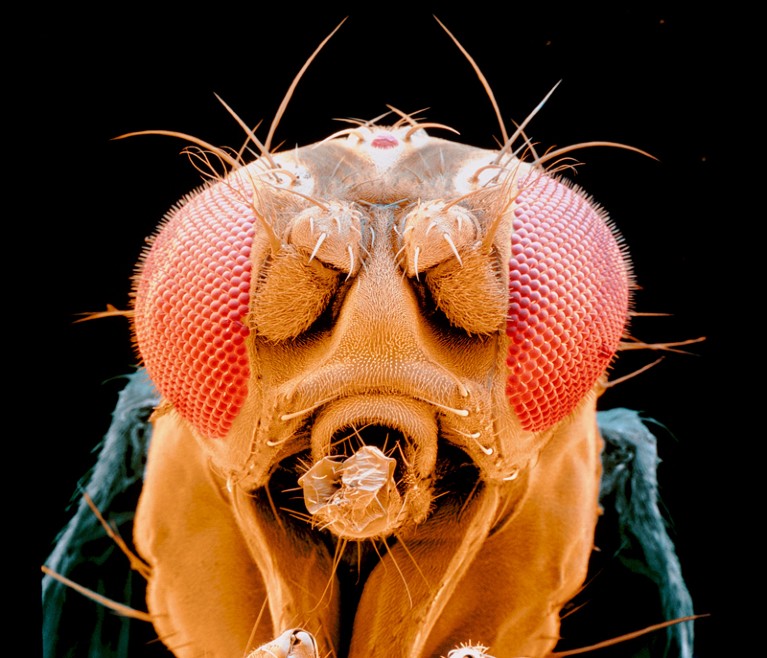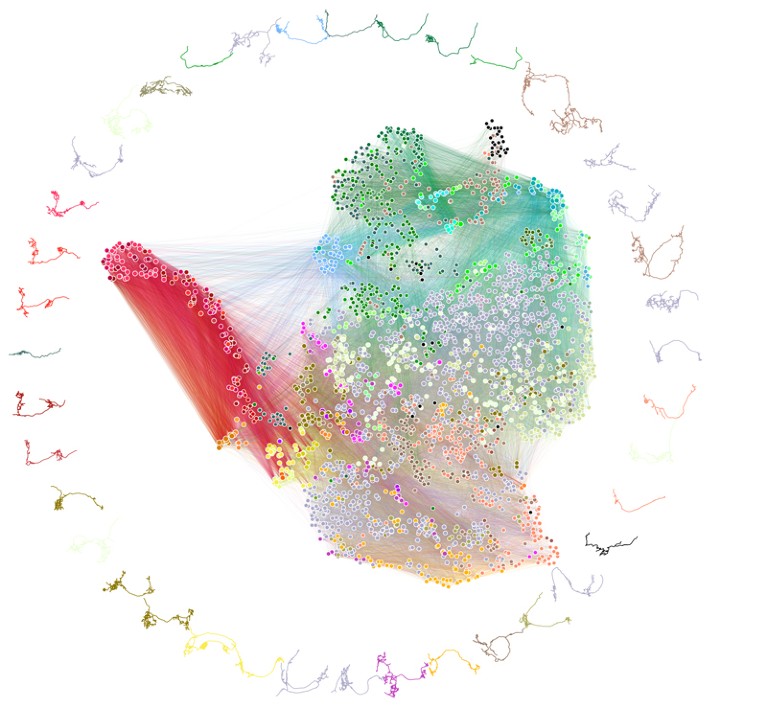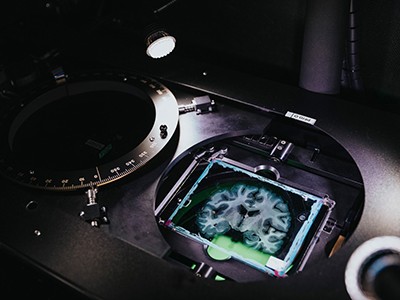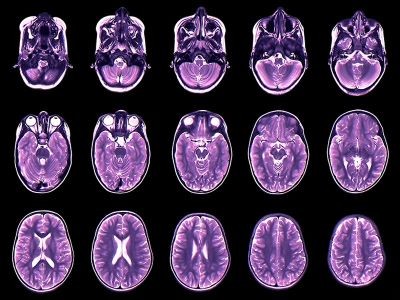
The fruit fly Drosophila melanogaster is an important model organism.Credit: Eye of Science/Science Photo Library
Scientists have generated the first complete map of the brain of a small insect, including all of its neurons and connecting synapses.
The research, published on 9 March in Science1, provides a brain-wiring diagram known as the connectome of a complex animal for the first time — the fruit fly Drosophila melanogaster. The map shows all 3,016 neurons and 548,000 synapses tightly packed in a young Drosophila’s brain, which is smaller than a poppy seed.
The map is a milestone in understanding how the brain processes the flow of sensory information and translates it into action. “Now we have a reference brain,” says Marta Zlatic, a neuroscientist at the University of Cambridge, UK, and co-author of the paper. “We can look at what happens to connectivity in models of Alzheimer’s and Parkinson’s diseases and of any degenerative disease.”
Ideal model
Until now, scientists had mapped the connectomes of only the worms Caenorhabditis elegans and Platynereis dumerilii, and the larva of the sea squirt Ciona intestinalis. Drosophila was an ideal model for connectome studies, because scientists have already sequenced its genome, and the larvae have transparent bodies. Fruit flies also exhibit sophisticated behaviours — including learning, navigating landscapes, processing smells and weighing the risks and benefits of an action. “Its size is manageable for current technology,” says Chung-Chuang Lo, a computational neuroscientist at the National Tsing Hua University in Hsinchu, Taiwan.
“If you had asked me in the Eighties, when the C. elegans work was being done, about this project in the fruit fly, it would have been impossible,” says Albert Cardona, a neuroscientist at the University of Cambridge and co-author of the paper.

This diagram depicts connectivity in the fruit fly brain. Each point represents a neuron. Neurons with more-similar connectivity are plotted closer together. Lines show the connections between neurons. The border shows examples of different neuron structures and shapes.Credit: Benjamin Pedigo
The researchers spent a year and a half capturing images of the brain of a single six-hour-old Drosophila larva with a nanometre-resolution electron microscope. Using a computer-assisted programme, they then pinpointed the neurons and synapses and spent months manually checking them.
The authors identified 3,016 neurons, 93% of which were paired with a partner neuron in the opposite brain hemisphere. Most of the unpaired neurons were Kenyon cells, key neurons in the learning and memory centre.
How the world’s biggest brain maps could transform neuroscience
The researchers then used machine-learning algorithms to trace each neuron’s twisting connections. They annotated 548,000 synapses, which could be grouped into four types. “This is really time-consuming and labour-intensive,” says Kei Ito, a neuroscientist at the University of Cologne, Germany.
Most connectome work has included one type of connection — from the axon of one neuron to the dendrites of another — and ignored axon-to-axon or dendrite-to-dendrite connections. “Now we need to reconsider them: we probably need to think about creating a new computational model of the nervous system,” says Lo.
Multiple pathways
The wiring diagram showed that the insect’s brain was multilayered, with pathways of varying lengths connecting brain inputs and brain outputs.
It is “a nice, nested structure”, says Michael Winding, a neuroscientist at the University of Cambridge and co-author of the paper. But some of the brain networks have shortcuts, skipping layers. The authors suggest that such shortcuts increase the brain’s computational capacity and compensate for the limited number of neurons.
Your brain expands and shrinks over time — these charts show how
The team also found that 41% of the brain neurons form ‘recurrent loops’, providing feedback to their upstream partners. These shortcuts and loops resemble state-of-the-art artificial neural networks that are being used in artificial-intelligence research. “It’s interesting that the computer-science field is converging onto what evolution has discovered,” says Cardona.
The current map provides data from a single animal, but the authors say that technological advances will allow mapping of more flies — and eventually of other species. “One can now use it to train machine learning to do it much faster,” says Zlatic.
“It is not the full story,” says Lo. The next step is to map the brain of the adult Drosophila, which is more complex and has more neurons, he adds.



